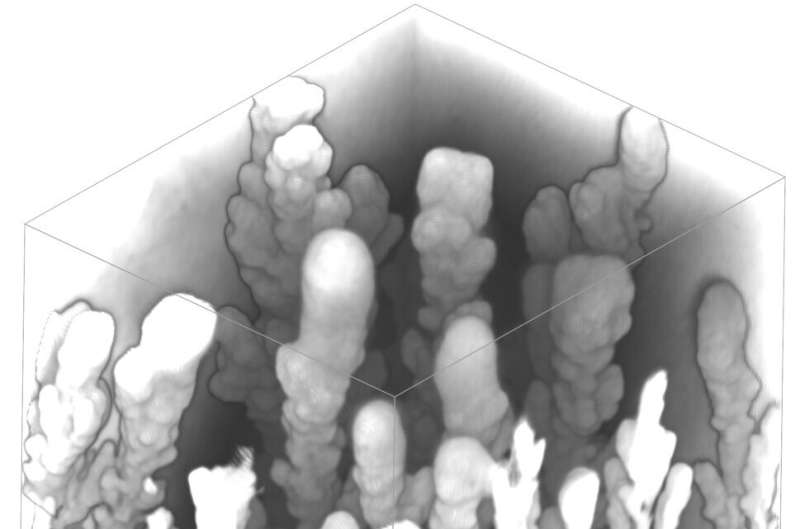Phys.org July 10, 2023
Manganese (Mn) dendrites are a common type of mineral dendrite that typically forms two-dimensional structures on rock surfaces. Three-dimensional (3-D) Mn dendrites in rocks have rarely been reported, and so their growth implications have largely escaped attention. Understanding the dynamics of the growth of three-dimensional mineral dendrites is important for various fields of science—physics, geology, material sciences and even the study of extraterrestrial environments. An international team of researchers (Austria, Poland, UK) combined high-resolution X-ray and electron-based data with numerical modeling to give the first detailed description of natural 3-D Mn dendrites (in clinoptilolite tuffs) and elucidate their growth dynamics. Their data showed that 3-D dendrite growth occurred by accretion of Mn-oxide nanoparticles formed when Mn-bearing fluids mixed with oxygenated pore water. The geometry of the resulting structures was sensitive to ion concentrations, the volume of infiltrating fluid, and the number of fluid pulses; thus, 3-D dendrites record the hydrogeochemical rock history. Through their work scientists are gaining valuable insights into the history of rocks and minerals, the knowledge can be used in industry, for example in the production of synthetic materials with new properties… read more. TECHNICAL ARTICLE

X-ray microtomographic image of manganese dendrite forest. Credit: Department of Geology, University of Vienna